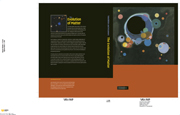Book contents
- Frontmatter
- Contents
- Introduction
- Part I The elements
- 1 Isotopes: weights and abundances
- 2 Introduction to the Universe: the baryonic matter
- 3 Element and isotope abundances: reference collection
- 4 Cosmological nucleosynthesis: production of H and He
- 5 Stellar nucleosynthesis: lower-mass stars and the s-process
- 6 Stellar nucleosynthesis: r- and associated processes
- 7 Timing of stellar nucleosynthesis
- 8 Chemical evolution of the Galaxy
- Part II Early solar system: nebula formation, evolution and lifetime
- Part III Accretion of the Earth
- Part IV Global evolution of the Earth
- References
- Glossary
- Abbreviations
- Meteorites, rocks and minerals
- Index
3 - Element and isotope abundances: reference collection
Published online by Cambridge University Press: 04 September 2009
- Frontmatter
- Contents
- Introduction
- Part I The elements
- 1 Isotopes: weights and abundances
- 2 Introduction to the Universe: the baryonic matter
- 3 Element and isotope abundances: reference collection
- 4 Cosmological nucleosynthesis: production of H and He
- 5 Stellar nucleosynthesis: lower-mass stars and the s-process
- 6 Stellar nucleosynthesis: r- and associated processes
- 7 Timing of stellar nucleosynthesis
- 8 Chemical evolution of the Galaxy
- Part II Early solar system: nebula formation, evolution and lifetime
- Part III Accretion of the Earth
- Part IV Global evolution of the Earth
- References
- Glossary
- Abbreviations
- Meteorites, rocks and minerals
- Index
Summary
Hydrogen and helium and their special significance
The lightest isotope, hydrogen, with A = 1, is the prime building block for the elements, and spectroscopic measurements show that H is the most abundant element in stars and interstellar clouds in our Galaxy and in the Universe as a whole: nine out of ten atoms are hydrogen. The second stable hydrogen isotope, deuterium (D), with A = 2, is much less abundant: it has a low binding energy per nucleon (Fig. 1.2), and upon collision with baryons and heavier particles it is readily fused to form 3He or He. As nuclear processes in stars thus tend to destroy D, this nuclide must have been generated in another process, i.e. in the earliest prestellar nucleosynthesis.
This hypothesis can be tested by measuring the prestellar D/H ratio of galaxies. This can be achieved by the spectroscopy of interstellar clouds lying along the line of sight to a remote very bright object. Some of these clouds represent nearly virgin samples of prestellar cosmic material with ∼ 1000 times lower metallicity than that in the solar system (the metallicity of a system is a measure of the abundance of elements heavier than helium). High-resolution spectroscopic measurements of the H and D abundances in these clouds gave D/H = (30 ± 2) × 10−6 (Schramm and Turner, 1998).
- Type
- Chapter
- Information
- The Evolution of MatterFrom the Big Bang to the Present Day, pp. 24 - 43Publisher: Cambridge University PressPrint publication year: 2008

